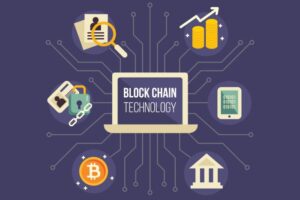Beginning with virtual reality for education, the narrative unfolds in a compelling and distinctive manner, drawing readers into a story that promises to be both engaging and uniquely memorable.
This innovative approach leverages immersive technology to create interactive learning experiences, significantly enhancing student engagement and retention. From virtual field trips to simulations of complex scientific concepts, virtual reality offers unique opportunities for educators to inspire and connect with students in ways traditional teaching methods may not achieve.
Virtual Reality in Educational Settings
Virtual reality (VR) is transforming the landscape of education by providing students with unprecedented opportunities to engage with complex concepts and environments. This innovative technology creates immersive experiences that enhance learning by making it more interactive and enjoyable. As educational institutions increasingly adopt VR, its impact on student engagement and learning outcomes becomes more evident.The integration of virtual reality into educational settings has shown a significant increase in student engagement.
Traditional teaching methods often struggle to capture students’ attention, leading to passive learning experiences. VR addresses this challenge by offering immersive learning experiences that actively involve students in their education. When students can visualize and interact with the subject matter, they are more likely to retain information and develop a deeper understanding of the content. This technology transforms passive observers into active participants, fostering a greater desire to learn.
Benefits of Immersive Learning Experiences Using Virtual Reality
Immersive learning experiences through virtual reality provide several advantages that enhance the educational process. Some key benefits include:
- Enhanced Engagement: VR captivates learners by placing them in interactive environments that stimulate curiosity and excitement about the subject matter.
- Real-World Application: VR allows students to practice real-world skills in a safe environment, bridging the gap between theoretical knowledge and practical application.
- Personalized Learning: Students can learn at their own pace, revisiting complex topics or exploring areas of interest in more depth, catering to diverse learning styles.
- Collaboration Opportunities: VR can facilitate group projects, enabling students to work together in a virtual space, regardless of their physical location.
The introduction of VR in classrooms has resulted in numerous successful applications across various educational institutions. For example, the University of Illinois has implemented VR technology in their biology courses, allowing students to explore the human body in 3D. This hands-on experience helps students grasp complex biological structures and functions in a way that traditional textbooks cannot. Additionally, the Stanford Virtual Human Interaction Lab provides simulations where students can engage in scenarios that develop empathy and understanding, such as walking in another person’s shoes.Another noteworthy example is the use of VR in history education.
Schools like the International School of Amsterdam have employed VR to transport students to significant historical events. By experiencing a virtual reconstruction of the events, students gain a more profound appreciation for history and its impact on the present. This application not only makes history more engaging but also encourages critical thinking as students analyze and reflect on their experiences.
“Virtual reality in education is not just about technology; it’s about creating meaningful learning experiences that prepare students for the future.”
Developing Virtual Reality Educational Content

Creating effective virtual reality (VR) educational content involves more than just using cutting-edge technology; it requires a thoughtful approach to ensure the material is engaging, informative, and conducive to learning. This section Artikels methods for crafting VR content specifically designed for educational environments, highlighting essential tools and integration strategies.
Methods for Creating Effective Virtual Reality Content
The development of VR educational content necessitates a clear understanding of the learning objectives and how the immersive nature of VR can enhance those objectives. Here are some key methods to consider:
- Define Learning Objectives: Clearly Artikel what learners should achieve post-experience, ensuring that the VR content aligns with educational standards.
- Engage Users with Interactivity: Incorporate interactive elements that allow users to manipulate objects or environments, fostering an active learning experience.
- Utilize Storytelling: Create narratives that resonate with learners, providing context and relevance to the educational material.
- Incorporate Real-World Scenarios: Use realistic simulations that relate to real-life applications, making learning relatable and practical.
- Gather Feedback for Iteration: After initial deployment, collect user feedback to refine and improve content continually.
Software Tools and Platforms for VR Development
Selecting the right software tools and platforms is critical for developing engaging VR educational materials. Below is a list of notable options that cater to various skill levels and project requirements:
- Unity: A widely-used game engine that provides extensive resources for creating interactive VR experiences, suitable for all levels.
- Unreal Engine: Known for its high-quality graphics, this platform is ideal for creating visually stunning educational applications.
- Blender: A powerful open-source tool for 3D modeling and animation, useful in crafting custom assets for VR environments.
- Google VR: Offers resources and libraries for developing VR applications specifically for educational settings.
- CoSpaces Edu: A user-friendly platform that allows educators and students to create VR content easily, focusing on collaborative learning.
Integrating Virtual Reality into Existing Curricula
Effectively incorporating VR into established curricula requires careful planning and alignment with educational goals across different subjects. The following guidelines can facilitate this integration:
- Identify Subject Relevance: Determine which subjects can benefit most from VR, such as science for virtual lab experiences or history for immersive historical events.
- Align with Standards: Ensure that VR content complements existing educational standards and curricular benchmarks.
- Train Educators: Provide training for teachers on how to effectively use VR in their classrooms, including technology troubleshooting and pedagogical strategies.
- Foster Collaboration: Encourage teamwork among students through VR experiences that require collaborative problem-solving or creative projects.
- Assess Learning Outcomes: Develop assessment methods to measure the effectiveness of VR experiences in enhancing learning and engagement.
“Virtual reality is not just a technology; it’s a tool for exploration and understanding that transcends traditional learning boundaries.”
Future Trends and Challenges in Virtual Reality for Education
The integration of virtual reality (VR) into educational settings is rapidly evolving, with advancements in technology promising to reshape how students learn. As educators and institutions increasingly adopt VR, understanding future trends and the challenges that accompany this shift is essential for maximizing its potential.
Potential Advancements in Virtual Reality Technology
The future of virtual reality in education is shaped by emerging technologies that enhance immersive learning experiences. Innovations such as improved hardware, software, and content creation tools are paving the way for more effective educational applications. Key advancements include:
- Enhanced Accessibility: As VR hardware becomes more affordable and widespread, a greater number of schools and students will be able to access these resources, eliminating barriers to participation.
- Improved Interactivity: Future developments may include haptic feedback and gesture recognition, enabling more intuitive interactions within virtual environments.
- AI Integration: The incorporation of artificial intelligence could personalize learning experiences, adapting content and challenges to the individual needs of students.
- Cloud-Based Solutions: With advances in cloud computing, VR applications may become more scalable, allowing for seamless updates and collaboration across diverse educational institutions.
Challenges in Implementing Virtual Reality in Classrooms
Despite its potential, the implementation of virtual reality in education presents several challenges for educators. These obstacles must be addressed to harness the full benefits of VR technology. Some significant challenges include:
- Cost of Implementation: The initial investment for VR equipment and software can be prohibitive for many schools, particularly those with limited budgets.
- Training and Support: Educators often require extensive training to effectively use VR tools, and ongoing technical support is necessary to resolve issues that may arise.
- Curricular Integration: Finding ways to seamlessly integrate VR experiences into existing curricula can be difficult, requiring significant planning and collaboration among educators.
- Health and Safety Concerns: Prolonged use of VR headsets may lead to discomfort or health issues among students, requiring careful management of usage time and monitoring.
Effectiveness of Virtual Reality Learning Compared to Traditional Teaching Methods
Research indicates that virtual reality can enhance the learning experience in ways that traditional teaching methods may not. Key differences in effectiveness can be summarized as follows:
- Engagement and Motivation: VR creates immersive environments that can captivate students’ attention, leading to increased engagement and motivation compared to traditional lectures.
- Experiential Learning: VR allows for hands-on experiences that may be impossible in the real world, such as exploring distant planets or historical events, fostering deeper understanding.
- Retention of Information: Studies have shown that students often retain information better when learning through VR due to its interactive and dynamic nature.
- Collaboration: Virtual reality can facilitate collaborative learning experiences, allowing students to work together in a shared digital space, which is often more challenging in traditional settings.
“Immersive experiences provided by VR lead to higher levels of retention and understanding, making learning not just a task but an adventure.”
Conclusion
In conclusion, the integration of virtual reality in educational settings not only transforms how we teach and learn but also opens up new avenues for interactive and immersive experiences. As we look toward the future, it is essential to navigate the challenges while embracing the potential advancements that can further enhance educational outcomes.
Question Bank
What is virtual reality in education?
Virtual reality in education refers to the use of immersive technology to create interactive learning environments that enhance student engagement and understanding.
How can virtual reality enhance learning?
It can enhance learning by providing immersive experiences that allow students to explore concepts in a hands-on manner, improving retention and comprehension.
What are some challenges of implementing virtual reality in classrooms?
Challenges include high costs, the need for technical training for educators, and ensuring accessibility for all students.
Is virtual reality effective compared to traditional teaching?
Research suggests that virtual reality can be more effective than traditional methods in engaging students and facilitating deeper learning, although it may not replace traditional teaching entirely.
What tools are available for creating VR educational content?
There are several tools available, including Google Expeditions, CoSpaces, and Unity, which help educators create and manage VR content for various subjects.




